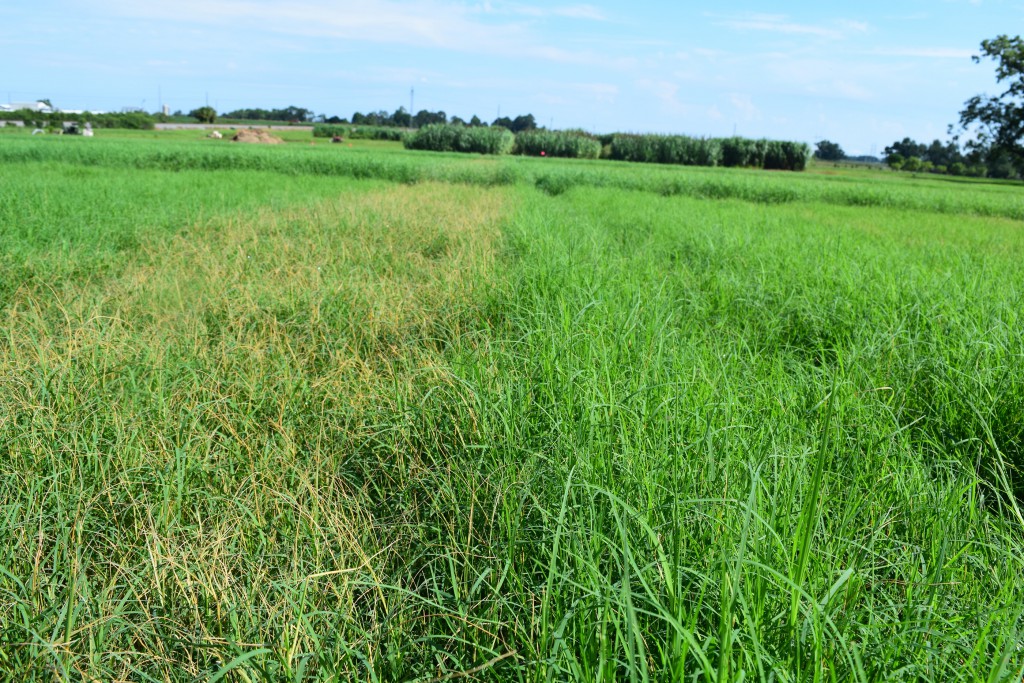
Are any of you noticing brown spots in your bermudagrass hay fields? If so, you probably have some damage that has been caused by a bermudagrass stem maggot. The BSM bores into the pseudostem, the stem-like structure made up of leaf sheathes, where it feeds on the sap. This feeding cuts off water and sap flow to the top two to three leaves, which can cause severe yield loss if the damage occurs in the early stages of regrowth.
So, the next question on your mind is how do we control the stem maggot. To better understand control methods, let’s take a brief look at the life cycle of the BSM. The maggot is actually the larval stage of the BSM fly. The fly lays her eggs in fields with bermudagrass. Two to three days later, the maggots hatch and bore into the bermudagrass leaf whorl. After the larva has damaged the grass, it crawls out and goes into the ground to pupate. Approximately 7-10 days later, it emerges from the ground as an adult fly.
When you harvest a cutting of hay, any viable larvae can crawl out of the grass when it is cut and go into the ground which causes a sizeable flush of flies to emerge from the ground 7-10 days after cutting. An insecticide application is recommended 7-10 days after cutting to control the adult flies that are emerging to reduce populations of the BSM in your bermudagrass hayfield. If there are other fields nearby that have shown damage, a second spray 7-10 days after the first may be needed to control the BSM.
The recommended chemical control options are various pyrethroids for example: Lamda-cyhalothrin, Bifenthrin, Zeta-cypemethrin, and Cyfluthrin. This is not the complete list of pyrethroids just some examples.
For more in depth informaton about the bermudagrass stem maggot check out this UGA publication below.
Bermudagrass Stem Maggot Publication UGA https://secure.caes.uga.edu/extension/publications/files/pdf/B%201484_1.PDF
